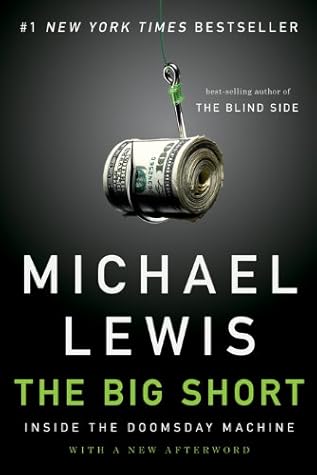More on this book
Community
Kindle Notes & Highlights
was odd in his belief that the best way to make money on Wall Street was to seek out whatever it was that Wall Street believed was least likely to happen, and bet on its happening.
had had enough success, to know that the markets were predisposed to underestimating the likelihood of dramatic change.
This, in Greenblatt’s world of value investors, counted as heresy. Old-fashioned value investors shunned options because options presumed an ability to time price movements in undervalued stocks. Greenblatt’s simple point: When the value of a stock so obviously turned on some upcoming event whose date was known (a merger date, for instance, or a court date), the value investor could in good conscience employ options to express his views. It gave Jamie an idea: Buy a long-term option to buy the stock of Capital One. “It was kind of like, Wow, we have a view: This common stock looks interesting.
people, and by extension markets, had difficulty attaching the appropriate probabilities to highly improbable events.
As Charlie pointed out, “It’s really hard to know when you’re lucky and when you’re smart.”
What struck them powerfully was how cheaply the models allowed a person to speculate on situations that were likely to end in one of two dramatic ways. If, in the next year, a stock was going to be worth nothing or $100 a share, it was silly for anyone to sell a year-long option to buy the stock at $50 a share for $3. Yet the market often did something just like that. The model used by Wall Street to price trillions of dollars’ worth of derivatives thought of the financial world as an orderly, continuous process. But the world was not continuous; it changed discontinuously, and often by
...more
Financial options were systematically mispriced. The market often underestimated the likelihood of extreme moves in prices. The options market also tended to presuppose that the distant future would look more like the present than it usually did. Finally, the price of an option was a function of the volatility of the underlying stock or currency or commodity, and the options market tended to rely on the recent past to determine how volatile a stock or currency or commodity might be.
Overpriced bonds were not “expensive” overpriced bonds were “rich,” which almost made them sound like something you should buy. The floors of subprime mortgage bonds were not called floors—or anything else that might lead the bond buyer to form any sort of concrete image in his mind—but tranches. The bottom tranche—the risky ground floor—was not called the ground floor but the mezzanine, or the mezz, which made it sound less like a dangerous investment and more like a highly prized seat in a domed stadium. A CDO composed of nothing but the riskiest, mezzanine layer of subprime mortgages was
...more
The subprime mortgage market had a special talent for obscuring what needed to be clarified. A bond backed entirely by subprime mortgages, for example, wasn’t called a subprime mortgage bond. It was called an ABS, or asset-backed security.
It was also a stunning opportunity: The market appeared to believe its own lie. It charged a lot less for insurance on a putatively safe double-A-rated slice of a CDO than it did for insurance on the openly risky triple-B-rated bonds. Why pay 2 percent a year to bet directly against triple-B-rated bonds when they could pay 0.5 percent a year to make effectively the same bet against the double-A-rated slice of the CDO? If they paid four times less to make what was effectively the same bet against triple-B-rated subprime mortgage bonds, they could afford to make four times more of it.
They didn’t realize yet that the bonds inside their CDOs were actually credit default swaps on the bonds, and so their CDOs weren’t ordinary CDOs but synthetic CDOs, or that the bonds on which the swaps were based had been handpicked by Mike Burry and Steve Eisman and others betting against the market. In many ways, they were still innocents.
The rating agencies were about as low as you could go and still be in the industry, and the people who worked for them really did not seem to know just how badly they had been gamed by big Wall Street firms.
The best and the brightest Wall Street traders are quitting their big firms to work at hedge funds, where they can make not tens but hundreds of millions.
They showed up again in a calculation known as value at risk (VaR). The tool most commonly used by Wall Street management to figure out what their traders had just done, VaR measured only the degree to which a given stock or bond had jumped around in the past, with the recent movements receiving a greater emphasis than movements in the more distant past. Having never fluctuated much in value, triple-A-rated subprime-backed CDOs registered on Morgan Stanley’s internal reports as virtually riskless.


